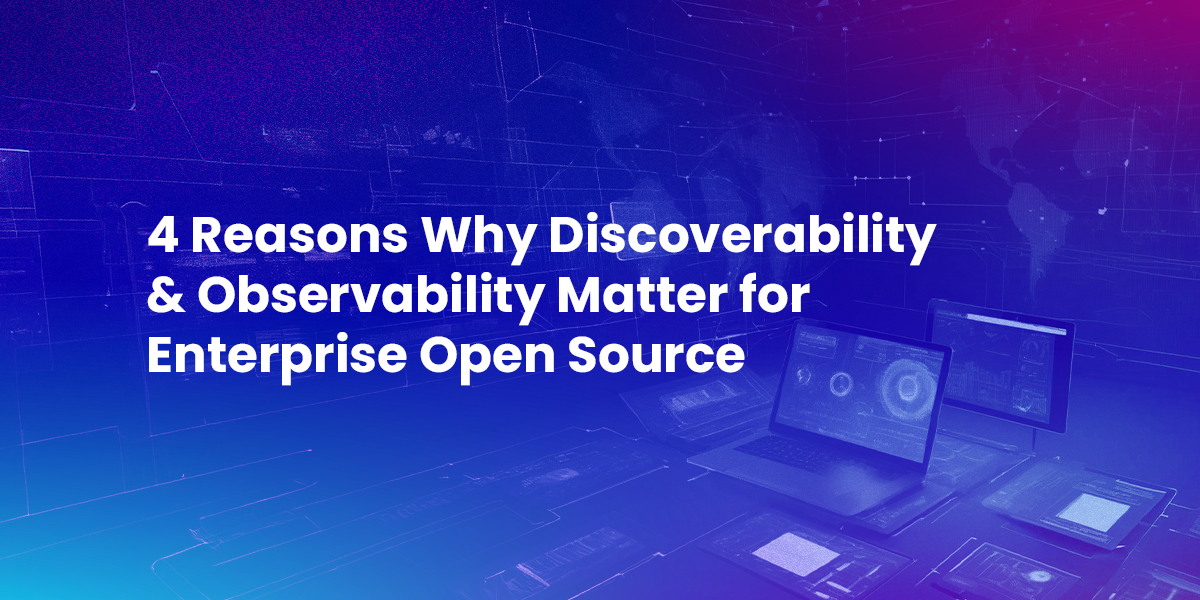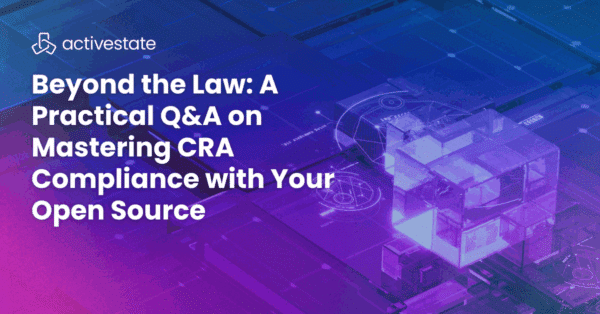Open source software has become a cornerstone of enterprise development, with open source code making up 90% of components in modern software applications.
Open source’s flexibility, cost-effectiveness, and community-driven innovation are transforming industries, but with widespread adoption comes significant challenges. Managing open source dependencies at scale can introduce complex risks, from hidden vulnerabilities to compliance pitfalls stemming from diverse licensing requirements.
Despite these challenges, many organizations continue to add more and more open source code to their repos. In fact, “89% of IT leaders believe enterprise open source is as secure or more secure than proprietary software,” according to the State of Open Source Report by RedHat.
While open source has changed the game for software development, it’s not infallible to security risks.
Without proper oversight, these risks can snowball into costly security breaches, legal complications, or operational inefficiencies. This is where discoverability and observability play a critical role.
In this blog, we’ll explore why visibility into your open source software supply chain is essential for securing and scaling your enterprise software, while also giving your team time back to focus on innovation.
The growing importance of discoverability and observability
You’d never fly blind on the proprietary code your developers write in-house. New lines of code go through rounds (and rounds, and rounds) of code reviews looking for bugs, security issues, and redundancies before being shipped.
So why should open source code be any different? Many teams too willingly trust the promise of safety and security of open source – or calculate that a breach versus delivering an application is worth the risk.
As a community, we want to believe that all open source code is safe and secure, because it was developed by people like us. But that’s not always the case, no matter how nice of a sentiment.
Bad actors know that open source code can be the opportunity they need to create a back door into your software, presenting measurable risks to both you and your users. When using open source at scale, it becomes increasingly difficult to keep tabs on all the code.
That’s where the importance of open source discoverability and observability comes in. Creating processes and implementing tools that lift the curtain on open source usage, user details, deployment locations, and risk levels can prevent costly and time-consuming issues. We’re talking millions – data breach costs rose to $4.45 million per incident in 2023, IBM found in its annual Cost of a Data Breach report.
Discoverability and observability creates the transparency you need to know what open source is running where in your organization and where there might be issues.
Four hard-to-argue-with reasons discoverability and observability are critical for enterprise open source
If you’re still not convinced, let’s explore the positive impact discoverability and observability have on open source software management.
1. Make your risk management less risky
When using open source software, vulnerabilities in dependencies are public enemy number one.
Dependencies are core to the way your software functions and often include nested components, making it easy for vulnerabilities to hide deep within your codebase. Vulnerabilities expose your systems to significant risks, like data breaches or supply chain attacks, if left unchecked.
Proactively tracking and mitigating vulnerabilities ensures that your applications remain secure, stable, and compliant.
2. Keep everything above board
Closely tracking your open source licenses and maintaining regulatory adherence is key to compliance and avoiding legal or financial repercussions.
Open source components can come with a variety of licenses, each with specific terms and obligations. If you don’t keep track of these requirements, you might unknowingly commit violations.
Failure to comply with these terms can have real consequences – more than just a slap on the wrist. It could result in litigation, reputational damage, or restrictions on software usage. Nobody wants that.
By proactively monitoring licenses and aligning them with your organization’s policies, you can mitigate compliance risks, ensure proper usage, and support transparent, lawful development practices.
3. Get back to what matters most: innovation
Developers spend 57% of their time putting out fires – according to a report by Cisco.
Once you subtract time spent in meetings, updating Jira tickets, and responding to endless Slack pings from people who don’t understand the meaning of ‘focus time’, the math isn’t looking good for how much time is left over for innovation.
There are a lot of time-consuming obligations engineering leads cannot get their team out of. But there is something that can be done about reducing risk so developers don’t have to spend all their time fixing ‘code red’ issues.
Simplifying dependency management leads to speedier resolutions, meaning your devs can get back to meaningful work more quickly if something goes wrong.
4. Discoverability and observability unlocks critical next steps
Not only is discoverability and observability important because of the business impacts we’ve discussed above, it’s part of the critical first step in a holistic process for open source software security:
- Detect (discover and observe)
- Prioritize
- Remediate
Open source security is an ongoing cycle that isn’t complete until the most important fixes have been prioritized against other work, built, and deployed back into production. Discovering and observing issues within your codebase unlocks the ability to prioritize and remediate risky security issues.
Take a step in the right direction
Improving discoverability and observability in your software supply chain requires a multi-pronged approach with the right workflow, tool, and a trusted partner to make it happen.
We’ve supported dozens of companies in this process. Our unified platform has everything you need to secure your enterprise open source software supply chain.
At ActiveState, we help teams take a holistic, secure approach to open source management by ensuring unparalleled observability, robust vulnerability management, continuous upgrades, and governance support.
We ensure a frictionless, scalable integration within your existing workflows and developer tools, so you don’t have to completely overhaul your tech stack. Plus, we’re compatible with all open source languages.
Ready to gain full visibility over your software supply chain? Explore ActiveState’s platform to enhance software supply chain security through an Enterprise Trial.







